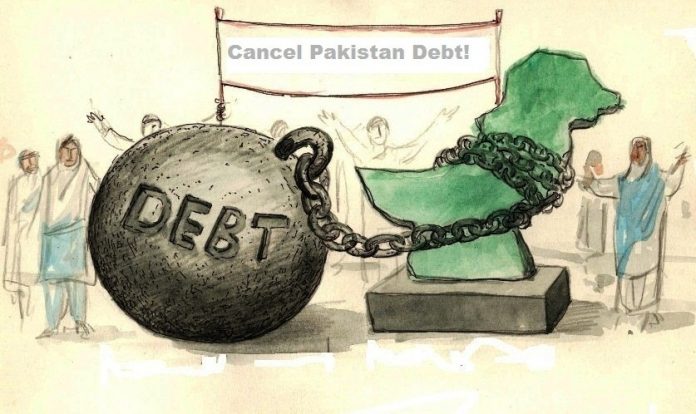ISLAMABAD: The government has admitted before the National Assembly that the country debt bearing capacity has eroded in last one year.
Most of external debt sustainability indicators have fallen according to the governments Debt Policy Statement 2017-18, which finance ministry provided to the lower house of parliament, reported an English daily.
The government in the document has confessed the country’s external debt has risen at a faster pace than its foreign exchange earnings. This is the highest ratio recorded since 2013.
External debt in percentage of foreign exchange reserves also grew to its highest level in three years and cost of external debt servicing in percentage of foreign exchange earnings also vastly rose, which is higher than 2012-13 when PPP was in power.
The submission of this document to the National Assembly would allow the lawmakers to measure the governments successes and failures in public debt management.
On the opposing side, some elements of Fiscal Responsibility and Debt Limitation (FRDL) Act 2005 have become obsolete due to government’s decision to make major amendments to the law which focus on hiding its inadequacies regarding management of public debt during its tenure.
Even the changes that transpired after amendment in FRDL Act 2005, the govt still failed in specific areas, however it claimed making improvements in certain other segments.
External debt as a percentage of foreign exchange earnings rose to 120 percent by end of FY 2016-17, indicating Pakistan’s debt bearing capacity had eroded. Also, this is the second year in succession, when this ratio has increased compared to FY 2015-16 of 110 percent.
Also, external debt in terms of percentage of foreign exchange reserves shot up by 40 percentage points to 290 percent in FY 2016-17 against 250 percent in FY 2015-16. This is attributable to widening current account deficit and a decline in foreign exchange reserves.
External debt servicing as a percentage of foreign exchange earnings ratio also eroded to 12.4 percent because of increasing debt servicing cost. This compares to 8.5 percent a year ago.
But offering clarification, Ministry of Finance stated a number of factors for these increases blaming Ministry of Commerce and tense situation in Middle East.
It added these ratios increased on back of decline in foreign exchange earnings during FY 2016-17. It blamed sluggishness in exports due to low commodity prices, problems in energy supply chain, global economic conditions as the reasons for the exacerbating situation.
The finance ministry neglected to mention negative impact of withholding taxes over Rs300 billion of tax refunds, enforcing more indirect taxes which contributed to rise in cost of doing business and levying electricity surcharges on exports.
Debt policy statement observed remittances had largely remained lower compared to previous FY 2015-16, due to unfavourable conditions in the Middle East and rigorous rules enforced by United States.
External debt to gross domestic product (GDP) ratio improved slightly, dipping to 20.6 percent from the previous 20.7 percent. The debt policy statement attributed this improvement to larger repayments of external debt during FY 2016-17.
Total external debt and liabilities grew 12.3 percent, touching $83 billion at end of FY 2016-17 and total public debt was recorded at Rs21.4 billion by end of June 2017.

























While we become worlds 6th largest economy with $8230 billion, eat it
After a long time someone has spoken the truth. So far we have been reading the opposite from ALL including the PM, Finance Minister Ishaq Dar. They all were talking of green pastures only. Very shameful that they lied. There is someone whose conscience is NOT dead.